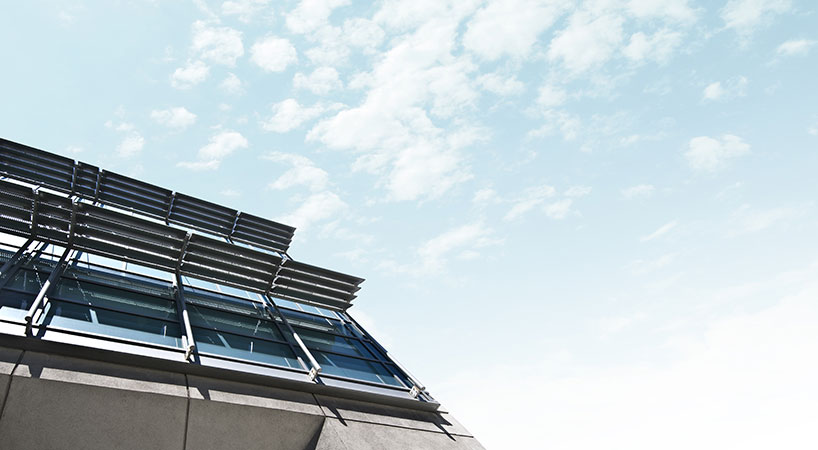Sustainable data centre operations are becoming more of a priority in the data centre sector, and rightly so. Matthew Underhill, Head of Infrastructure at Alfred H Knight, takes a closer look at how some of the largest data centre leaders are ensuring they operate sustainably and how others can follow suit.
These strange times have revealed some truly amazing sites. With almost no travel by air or vehicle, the Himalayas are visible from more than 100 miles away for the first time in decades and this is down to a reduction in air pollution.
In my home town of Nairobi, you can now see Mt Kilimanjaro, Africa’s tallest peak – and its second tallest peak, Mt Kenya. This is something that hasn’t happened for many, many years.
This got me thinking about just how eco-friendly the cloud actually is – and exactly how aware we as IT professionals are of our impact on the environment.
As IT professionals, we spend our time either in the physical data centre or in the cloud. Let’s take a closer look at how some of the largest data centres are ensuring they operate sustainably.
At its core, a green data centre is a sustainable data centre. These data centres make use of renewable energy, more efficient equipment and effectively eliminate waste where possible – the latter driven by Artificial Intelligence (AI).
But there’s good news: many hyperscalers have been working towards being greener for the last decade. Studies have shown data centres globally use 1% of the world’s energy, which has remained constant year-on-year despite capacity increasing by over 500% in the last decade.
Building a green data centre starts from the ground up. The Leadership in Energy and Environmental Design (LEED) rating system from the US Green Building Council helps to define green standards for buildings around the world. The LEED standards help save water, energy, resources, reduce waste, and support human health.
The LEED standards give us a green building, but how can we ensure our data centre is green to the core?
Renewable energy sources are a key starting point. Using sources such as solar, hydro, geothermal and wind can help to reduce the carbon footprint on the data centre. Solar power in conjunction with fuel cells can make this more efficient, with increased resiliency.
Thermal containment offers improved efficiency by containing either hot or cold air or both into their specific areas. This improves the efficiency by offering greater control of the inlet air temperature, helping to eliminate hot spots making the requirements more predictable. In turn, this can enable increased utilisation of free air cooling.
Free air cooling uses low outside air temperatures to help cool the data centre – and is one of the reasons that the Nordic countries are favoured for big data centre installations. Granted, this air still needs to be filtered and moisturised but this process requires much less energy over typical cooling methods.
More energy-efficient server infrastructure is also key if the server itself requires less cooling overall then less energy is expended. This also goes hand in hand with eliminating waste, achieved by switching off unused servers and tapping into every watt of energy on existing ones.
Making use of energy-efficient lighting and cooling systems seems like a no-brainer – but even just installing LEDs and motion-activated controls makes a big difference. And not only is LED lighting more efficient, it lasts longer so the fitting does not need to be changed as often – this results in fewer man-hours and less waste.
Machine Learning (ML) and Artificial Intelligence (AI) can greatly reduce power consumption. Google is a great example as it uses AI to automatically optimise cooling in its data centres. By utilising smart sensors and feeding those numbers into the company’s AI, Google saw a 30% improvement in efficiency.
And it’s not the only one, Facebook’s data centre in Odense, Denmark has the potential to reuse the heat waste generated to heat over 6,000 homes. One of IBM’s data centres in Switzerland is using its heat waste to warm a local swimming pool. Amazon is using the heat waste from its Seattle data centre to heat a biosphere nearby.
And none of this has to be exclusive to large players. There are options for everyone – such as waste heat is integrated into building and campus heating water systems.
These principals can be applied to smaller data centre installations and aren’t the reserve of the big hyperscalers alone. By following some of the ideas above, we can achieve a greener data centre.
We should think about the impact of our IT requirements on the environment in the same way we think about sourcing food and clothes. Being carbon-neutral is a step in the right direction, as is ensuring the entire supply change is sustainable and ethical.
Some easy steps we could make are ensuring that we source our equipment with ethics in mind:
- Ensure our electronic waste is recycled responsibly
- Cut down on waste by only ordering what’s required – was that extra 1,000 metres of copper wire needed?
- Utilise our infrastructure to the fullest
- Ask your supplier if they adhere to The Responsible Business Alliance’s (RBA) Code of Conduct, or similar?
If we want to go green, we need to start with people – if the people producing raw materials are happy, healthy and educated, they’re more likely to look after their immediate environment. This kind of approach can be used throughout the supply chain and by doing so, I believe we will end up with not just a greener data centre, but a greener earth.
The time is now to usher in the age of the ethical cloud – let’s all work together to ensure that we never lose sight of those majestic peaks again.


